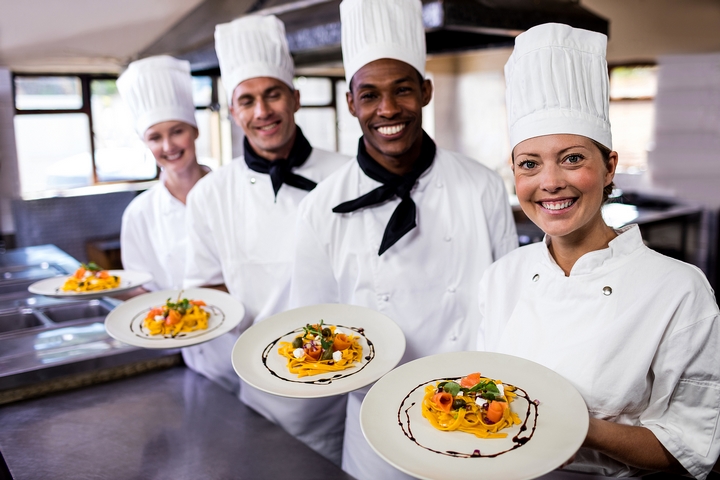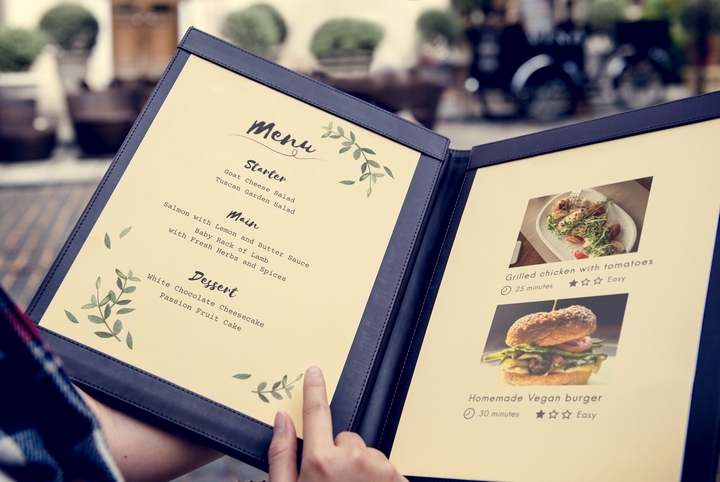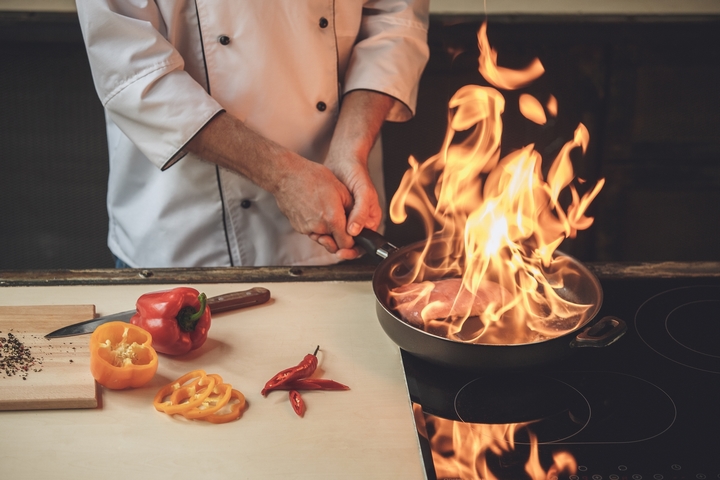
The restaurant is one of the most welcoming businesses in our society. You walk in, take a peek at the menu, order your food, and wait. Once your food arrives, you sit down to eat or leave with your order. The process then repeats itself, for the entirety of the business day.
It might seem like a repetitive, and oftentimes monotonous, procedure, but the rapidity is worth noting. Restaurants have to act fast, in order to maximize the guest experience. So, how exactly are they able to get food to paying and eager customers so fast?
Here is the process of why restaurants make food so fast:
1. Restaurant Menu

Although it may be something that is glossed over, in terms of speed, the menu is critical. A restaurant that prides itself on quick service will design their menu in a very eye-catching way. Once a customer’s eyes are locked in to the design, information can be processed rather quickly.
This is a psychological advantage that restaurants often employ, to speed up a customer’s inquiry. By keeping easy-to-make orders front-and-centre, guests will generally look at these items first. If they choose to proceed, these items can be placed, and prepared as fast as they are ordered.
2. Restaurant Staff

In order for restaurants to make food so fast, your staff is going to play a major role. Although preparing food orders in a rapid way is key, having the right staff on deck is just as important. That means that restaurant owners have to take care in hiring and training competent staff members. In order to get them effectively trained, owners will take the time to learn about their strengths and weaknesses.
To speed up the food order procedure, owners will try to emphasize strengths and work on drawbacks. Leadership is very important here, as is being able to motivate workers in busier times. Once the entire team is working in seamless cohesion, orders can be made in rapid time!
3. Restaurant Inventory

There are a ton of ways in which restaurants can cut down on time spent on miscellaneous areas. Stocking and keeping track of inventory is very time-intensive, and can impede on overall operations. To mitigate the time it takes to make orders, ensure that all inventory is handled prior to the day starting.
Moreover, you’ll want to make sure all work stations have been organized, so that the day goes by much smoother. Kitchens, for example, can become chaotic if things are not organized. Time is of the essence when orders have been placed. That means that you should keep all of your stock organized, and set for the upcoming day.
4. Order Ingredients

Getting your staff to know how to handle dishes is one thing. Ensuring they know how to prep the actual food is an entirely different beast. To save time, try to have as many ingredients prepped as you possibly can, ahead of business hours. This aids in overall organization, similar to keeping stock of your inventory.
Orders that contain a ton of vegetables should also be prepared in advance too. Chop and slice produce beforehand, so that the more meticulous ingredients can be worked on instead. Make sure your restaurant kitchen has all the necessary food prep equipment. Saving time, as it pertains to ingredient preparation, can be challenging at first. However, the advantages will come to light once the practice becomes normal!
5. Ready-To-Go Orders

If you run a smaller restaurant, you may offer some takeout options for your guests. If this is the case, be sure to include some ready-to-go meal options on the menu. That way, you can cut down on the overall time used to prepare and serve the actual food. Items, such as sandwiches and salads, can be prepared way ahead of time.
The best part about this is that these types of orders can be very popular, if served correctly. Always take the time to get to know what your customers enjoy the most. If they are indeed a popular order, emphasize them more in your operations. The less time used to make food, the better for your efficiency.
6. Restaurant Communication

Above all else, being able to communicate effectively with your team is directly correlated to saving time. This means that all staff members should know what their role is for the day. It may take some time to get going, and mistakes may also be made.
Human nature requires little mistakes to be made, before they can be fixed. All staff members in your restaurant will eventually get a bead on how things are run. Once experienced, serving food can happen in record time, thanks to effective communication!
Running a restaurant can be a tough endeavour, especially if it’s your first time out. Serving food, however, is at the heart of the business, and requires firing on all cylinders. Customers will note how efficient your restaurant is, once they get their orders as quickly as possible!
